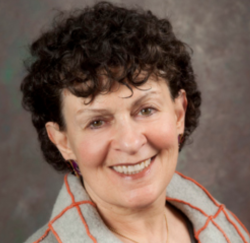“The summer learning experiences we’re talking about now really need to be better than they ever were in the past.”
– Secretary Miguel Cardona, U.S. Department of Education, in The Washington Post
Summer school—two words that conjure a memory of poorly performing students forced to attend a summer boot camp to raise test scores as they complete worksheets in sweltering classrooms. This year, amid discussions of learning loss and lost instructional time in the aftermath of COVID-19, policymakers, educators, and researchers stress the role that summer school can play in accelerating learning. But the calls for summer school are different from the past, with an emphasis on reinventing the summer experience.
The U.S. Department of Education’s “COVID-19 Handbook” identifies summer learning programs as valuable resources for addressing lost instruction from the past school year. Rather than use a punitive, stigmatizing model, educators are instead advised to employ evidence-based pedagogy and design programs tailored to students’ needs, local community, and the importance of socioemotional learning. Just being with other children, having real relationships with teachers, and learning with peers will be a key component of healing and learning. Summer school this year needs to embed aspects of summer camp.
Local education leaders are hearing the plea to reinvent summer school, and they are responding. In New York City, for example, all K-12 students are invited to participate in the Summer Rising program. This collaboration across city agencies and community organizations will offer students socioemotional and academic support through engagement with their classmates, teachers, and communities. The School District of Philadelphia and other districts across the U.S. are taking similar approaches. Leading educational researchers likewise support this intensive redesign effort—beginning this summer and continuing into the future—as detailed in a recent report from the Spencer Foundation and Learning Policy Institute. The report’s authors warn against intensive remediation or boot camp. Instead, drawing on research from the science of learning, they call for “learning environments that center strong teacher-student relationships, address students’ social and emotional learning, and provide students with opportunities to construct knowledge that builds upon their experiences and social contexts in ways that deepen their academic skills.”
If we can meld summer camp and summer school together, we can transform a traditionally dull, stigmatizing experience into an engaging and inclusive one.
There is alignment among policymakers, educators, and researchers about how to advance summer learning so that we begin to teach in the way that brains learn, with social relationships and social emotional skills at the core. Yet the wide gap between educational theory and practice is well-known. Even intensive tutoring, a widely supported intervention to counteract lost instructional time, must be implemented effectively. An overemphasis on boosting or accelerating academic performance to the detriment of relationship building could lead a tutoring program to backfire. It is imperative that school districts redesign summer learning programs in alignment with the latest research and federal guidance—prioritizing equity, access, and culturally responsive instruction. It is vital that we leverage students’ experiences inside and outside the classroom as pedagogical resources.
Shaping a new summer experience through the science of learning
Our 2020 report for the Brookings “Big Ideas for America” series presents evidence-based checklists of how children learn and what skills they need to learn for success in the 21st century, regardless of their future goals. Conveniently, the items on our checklists overlap with the principles of equitable post-pandemic education identified in the Spencer Foundation and Learning Policy Institute’s recent report, and the summer learning objectives described by the U.S. Department of Education and school districts. The how checklist covers a set of learning principles: Children learn best when education is active with room for discovery and experiential learning through inquiry and reflection; consistently engaging without distraction; made meaningful through connections between new information and prior knowledge gained inside or outside the classroom; socially interactive with peer collaboration and adult support; iterative with chances to form, test, and revise hypotheses about how the world works; and joyful. The what checklist corresponds to our breadth of skills approach, “the 6 Cs” of collaboration, communication, content, critical thinking, creative innovation, and confidence. Educators are encouraged to use these checklists to align their lessons with the best scientific knowledge. The model is intentionally flexible, prioritizing educator expertise and cultural diversity in the promotion of engaging, meaningful learning. In this sense it offers more equitable education that is easily adaptable to educators’ and students’ strengths, as well as any mandatory standards or curricula.
How wonderful it is to see evidence from the science of learning shaping the theories and proposals for a new summer learning experience. If we can meld summer camp and summer school together, we can transform a traditionally dull, stigmatizing experience into an engaging and inclusive one. That is reason for celebration. Yet, there is room for caution. Effective implementation of the plans and guidelines laid out by policymakers, educators, and researchers will be critical. Our Brookings paper offers one model that can foster success.








Commentary
Rush to summer school? A moment for celebration and caution
May 13, 2021